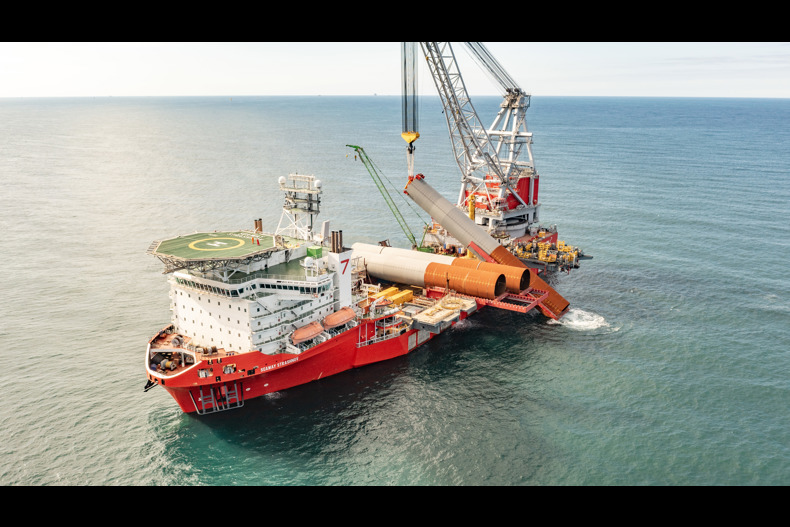
The team working on what will be the world’s largest offshore wind farm, Dogger Bank, have started work on the foundation installation campaign for the second phase of the development.
Seaway7’s vessels Seaway Strashnov and Seaway Alfa Lift have commenced installation of monopile foundations and transition pieces for the Dogger Bank B phase of the offshore wind farm project.
The team recently completed installation of all 95 transition pieces on Dogger Bank A, thus concluding the installation of the foundations for the first phase of the project.
"These installation milestones are the result of years of commitment and diligence from the project team and its delivery partners. As the world’s largest wind farm of its kind and due to the deployment of new turbine technology, every aspect of the wind farm has required us to come up with new innovative design and engineering solutions that will shape the future construction of offshore wind globally. We extend our thanks and congratulations to the many companies and individuals who’ve risen to this challenge and contributed to the milestone we’re celebrating today."
Olly Cass Dogger Bank Wind Farm Project Director
"We are happy to welcome Seaway Strashnov back to the project to commence foundation installation on Dogger Bank B - leading on from the vessel’s good performance last year on Dogger Bank A. After introducing our brand-new heavy lift vessel Seaway Alfa Lift to the project in October, the vessel operated through the high weather season installing transition pieces on Dogger Bank A, and now continues this work in phase B. The foundation installation scope is making excellent progress, enabled by our strong collaboration with our client Dogger Bank Wind Farm and our subcontractors."
Wouter van Dalen Project Director, Seaway7
The monopile foundations and transition pieces provide a solid and stable base for the scale of GE Vernova’s groundbreaking 13MW Haliade-X turbines. The monopile and transition piece structures were manufactured by Sif and Smulders and are being installed 80-miles off the Yorkshire coast by tier one contractor Seaway7.
Monopiles are the large-diameter tube-shaped steel structures that are installed in the seabed by the vessel using dynamic positioning technology.
The monopiles weigh in at up to 1,424 tonnes each and can measure up to 72.8 metres in length. The Dogger Bank transition pieces feature a pioneering split-level design to support safe installation and operation and have a record-breaking 8m flange to connect the monopiles and transition piece structures.
Confirmation of this offshore milestone on Dogger Bank B follows on from the successful installation of the offshore HVDC platform for the second phase of the wind farm in April.
A total of 277 monopiles and transition pieces will be installed across all three phases of the wind farm, with completion due in 2026.
Steel manufactured by Tata Steel in Wales and processed in Corby and Hartlepool is being used in the supporting components of the transition pieces, while South Tyneside-based Metec and Rochdale-based Granada Material Handling have also won contracts with Smulders to support this innovative and world-leading project.
Designed in the UK by experts from Wood Thilsted, Dogger Bank Wind Farm’s foundations have been optimised to tackle challenging wave loads in the Dogger Bank area of the North Sea, with installation in water depths of up to 32m and at a minimum distance of 130km from shore.

